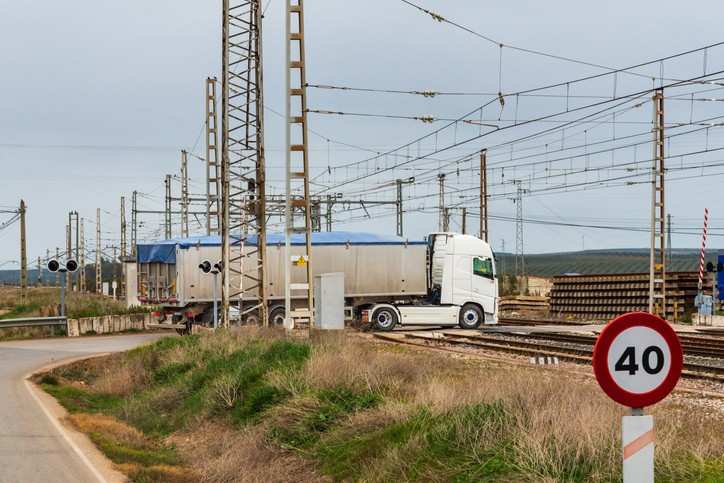Table of Contents
ToggleTrucks are a common sight on Massachusetts roads, from delivery vans zipping through Boston’s busy streets to massive 18-wheelers cruising along I-90. But have you ever wondered about the rules and regulations governing these vehicles? At Altman Nussbaum Shunnarah, we have seen how truck regulations impact both drivers and the public. This guide takes a closer look at these regulations and their impact.

The Basics of Truck Regulation
Massachusetts, like all states, follows federal guidelines for commercial trucks while also implementing its own rules. These regulations cover everything from vehicle size and weight to driver qualifications and hours of service. The main goal? Keeping our roads safe for everyone.
The Massachusetts Department of Transportation (MassDOT) and the Registry of Motor Vehicles (RMV) are the primary agencies overseeing truck regulations in the state. They work together to enforce rules, issue permits, and ensure compliance.
Size and Weight Restrictions
One of the most visible aspects of truck regulation is size and weight limits. Massachusetts has strict rules about how big and heavy trucks can be on its roads. These limits help prevent damage to roads and bridges while also ensuring trucks can safely navigate the state’s often narrow and winding routes.
In general, trucks in Massachusetts cannot be more than 13 feet 6 inches tall or 8 feet 6 inches wide. The maximum length for a single truck is 40 feet, while a truck and trailer combination can be up to 65 feet long. These limits might seem arbitrary, but they are carefully calculated to balance the needs of commerce with infrastructure limitations and safety concerns.
Weight limits are equally important. The maximum gross vehicle weight (the total weight of the truck and its cargo) is 80,000 pounds on interstate highways. However, this can vary on other roads, especially during spring thaw when roads are more susceptible to damage.
Oversize and Overweight Permits
Sometimes, businesses need to transport items that exceed these size and weight limits. In these cases, they must obtain special permits from MassDOT. These permits often come with specific route restrictions and may require escort vehicles to ensure safe passage.
The permit process can be complicated as it involves detailed route planning and safety assessments. It is not uncommon for businesses to seek legal assistance when navigating these requirements, especially for particularly large or heavy loads.
Driver Qualifications and Licensing
Truck regulations apply to more than just the vehicles—they also cover the people behind the wheel. In Massachusetts, commercial truck drivers must obtain a Commercial Driver’s License (CDL). This involves passing written and skills tests that are much more rigorous than those for a standard driver’s license.
CDLs come in different classes depending on the type of vehicle being driven. For instance, a Class A CDL is required for combination vehicles like tractor-trailers, while a Class B is needed for single vehicles weighing over 26,000 pounds.
Furthermore, drivers need special endorsements for specific types of cargo or vehicles. These include endorsements for hazardous materials, tank vehicles, and passenger transport. Each endorsement requires additional testing and, in some cases, background checks.
Hours of Service Regulations
Fatigue is a major safety concern in the trucking industry. To address this, both federal and state regulations limit how long truck drivers can work without rest. These “Hours of Service” rules are a bit confusing, but here is a simplified version:
- Drivers can work up to 14 hours in a day, but only 11 of those hours can be spent driving.
- After reaching the daily limit, drivers must take at least 10 consecutive hours off duty.
- Drivers can’t work more than 60 hours in 7 consecutive days or 70 hours in 8 consecutive days.
These rules aim to ensure drivers are well-rested and alert on the road. However, they can be challenging to follow, especially for long-haul truckers on tight schedules.
Hazardous Materials Transportation
Transporting hazardous materials adds another layer of complexity to truck regulations. Drivers need special endorsements on their CDLs, and vehicles must display appropriate placards indicating the type of hazardous material being transported.
Routes for hazardous materials are often restricted, especially in urban areas or near sensitive locations like schools or water supplies. Strict rules govern how these materials must be packaged, loaded, and secured during transport.
Stay Informed and Compliant
For truck drivers and trucking companies operating in Massachusetts, staying up-to-date with regulations is crucial. At Altman Nussbaum Shunnarah, we understand the challenges faced by the trucking industry in complying with these multifaceted regulations. We are here to help interpret the rules, assist with compliance, and represent our clients when issues arise. Get in touch with us today.




